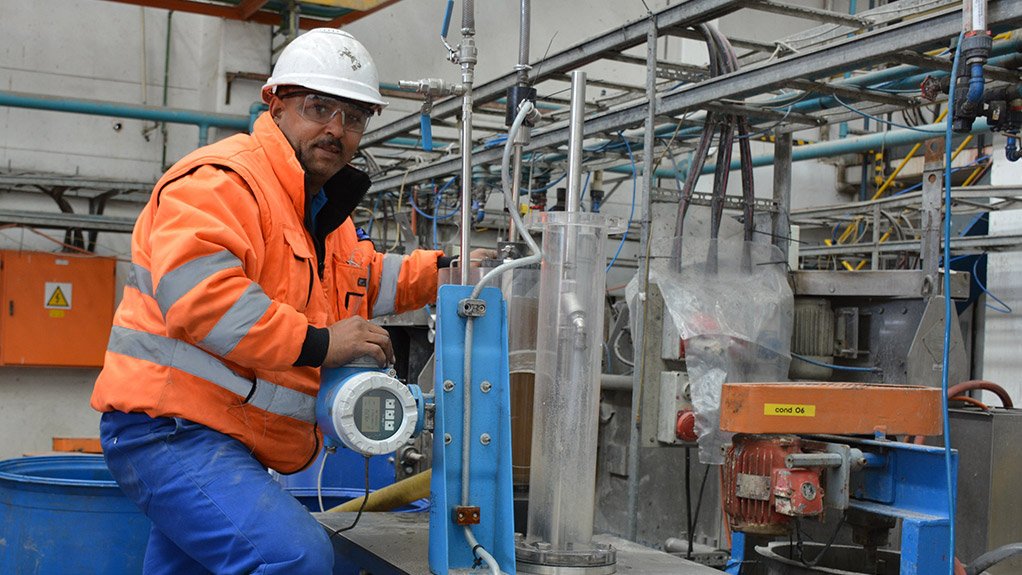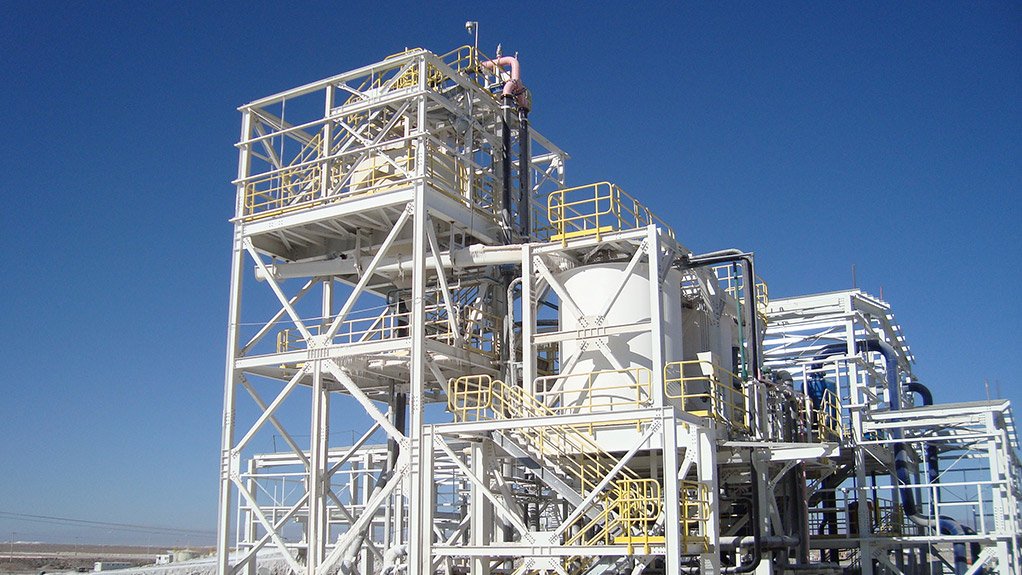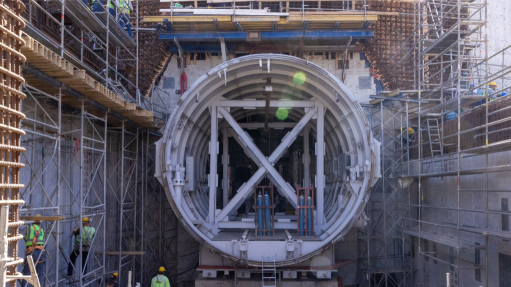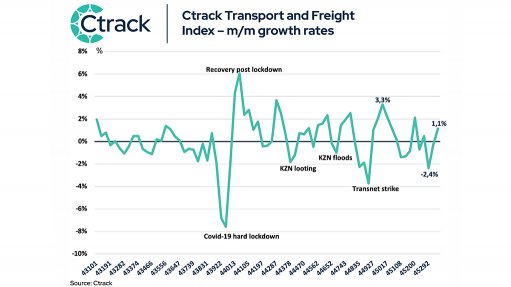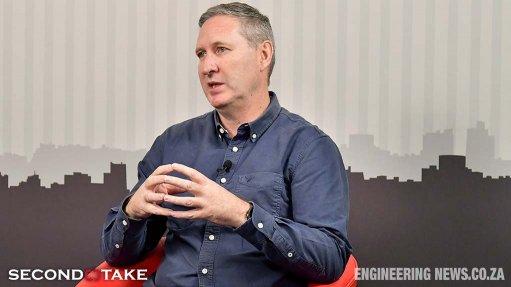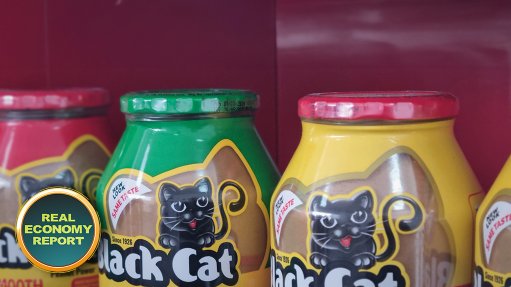MBE Minerals Proves That Pneuflot Is Suited To All Ores
This article has been supplied as a media statement and is not written by Creamer Media. It may be available only for a limited time on this website.
Pneumatic flotation technology is delivering outstanding results in field trials involving platinum group metals and iron ore, and will soon be put to the test in gold, rare earth and graphite circuits in southern Africa.
Gregory Niekerk, business development manager at MBE Minerals, says that the company’s Pneuflot technology is nearing the completion of an 18 month test at a South African PGM operation. The pilot plant has already delivered a 5% gain in recovery and yield.
This follows a trial in Brazil that was undertaken by a prominent iron ore miner which reported ground breaking gains using the Pneuflot technology.
“This customer undertook an industrial scale trial using a 4 metre diameter cell. Our 40 m3 Pneuflot cell operated in parallel with a 125 m3 agitator circuit. Both circuits received 320 tph of conditioned feed from a splitter box, and the results were overwhelmingly in favour of Pneuflot, prompting the world renowned Prof Antônio Eduardo C. Peres (PhD) of UFMG, Brazil to declare Pneuflot the future of iron ore flotation in his presentation at Flotation ‘15,” says Niekerk.
“The footprint of our 4 metre diameter cell is 4.5 m2 and it can handle throughputs between 450 m3 and 850 m3 of slurry per hour.”
These trials also confirmed that MBE Minerals’ Pneuflot technology uses more than 35% less electricity than competing technologies. There are also no mechanical moving parts in its cell or expensive auxiliaries such as compressors or blowers, resulting in reduced maintenance and operating costs, while its structural footprint is generally 50 to 60%, smaller than those of agitator cells and column cells of similar capacities.
During the next six months, the pneumatic flotation technology will be subjected to more trials at potential customers’ operations, including another PGM circuit on the Western Limb as well as a gold circuit on the East Rand and a graphite operation in Zimbabwe. The Pneuflot laboratory unit stationed at Mintek will be equally busy on contractual work in rare earth minerals, potash, phosphates and graphite.
“Energy (graphite and REE), food security (potash and phosphates), copper/PGM/gold/zinc (minerals) both in fresh feed and tailings retreatment are amongst the key mineral focuses for Pneuflot over the next 12 months,” says Niekerk.
“Pneuflot is easily “plugged and played” into any part of an existing circuit allowing comparative analysis to be undertaken by mines’ research and development teams from float feed to final tails. We have completed a number of installations at the back end of existing float circuits around the world in the last two to three years, where the scavenging of an additional 3 to 5% allowed the operators to enhance their revenue stream with project payback periods of less than 6 months,” he says.
MBE Minerals’ pilot plant comprises a one cubic metre feed tank and a 0,8 metre diameter cell and is easily containerised for transportation. The pilot plant can be operated in batch and continuous mode and treats up to 10 m3/h of slurry.
“We typically train our customers’ R&D team and then leave them to study the performance of the technology in their unique operating environments,” says Niekerk.
He explains that pneumatic flotation technology uses a slurry pump to feed slurry into an aerator mounted on top of the Pneuflot cells, where it comes into contact with air before being fed into the cell which primarily operates as an a separator vessel. Pneuflot’s aerators are self-aspirated, doing away with the need for compressors or blowers as the air is sucked into the pulp stream. Tested in 1987 in South Africa, the pulp stream is saturated with 11% more air comparative to other technologies.
The company’s industrial plants have diameters ranging from 0,8 metres to six metres in diameter with slurry feed rates of between 10 m³/h to 1 400 m³/h. The bigger cells are installed for a cost of less than 25 US cents per m³/h slurry feed. This places the technology in the lowest capital cost quartile.
Clearly, MBE Minerals’ approach to allowing its customers to test Pneuflot in live operating conditions is producing the necessary results as more mines and project developers realise that this unique pneumatic flotation technology is suited to their virgin ores, current tailings arisings and the retreatment of stockpiled tails.
Comments
Press Office
Announcements
What's On
Subscribe to improve your user experience...
Option 1 (equivalent of R125 a month):
Receive a weekly copy of Creamer Media's Engineering News & Mining Weekly magazine
(print copy for those in South Africa and e-magazine for those outside of South Africa)
Receive daily email newsletters
Access to full search results
Access archive of magazine back copies
Access to Projects in Progress
Access to ONE Research Report of your choice in PDF format
Option 2 (equivalent of R375 a month):
All benefits from Option 1
PLUS
Access to Creamer Media's Research Channel Africa for ALL Research Reports, in PDF format, on various industrial and mining sectors
including Electricity; Water; Energy Transition; Hydrogen; Roads, Rail and Ports; Coal; Gold; Platinum; Battery Metals; etc.
Already a subscriber?
Forgotten your password?
Receive weekly copy of Creamer Media's Engineering News & Mining Weekly magazine (print copy for those in South Africa and e-magazine for those outside of South Africa)
➕
Recieve daily email newsletters
➕
Access to full search results
➕
Access archive of magazine back copies
➕
Access to Projects in Progress
➕
Access to ONE Research Report of your choice in PDF format
RESEARCH CHANNEL AFRICA
R4500 (equivalent of R375 a month)
SUBSCRIBEAll benefits from Option 1
➕
Access to Creamer Media's Research Channel Africa for ALL Research Reports on various industrial and mining sectors, in PDF format, including on:
Electricity
➕
Water
➕
Energy Transition
➕
Hydrogen
➕
Roads, Rail and Ports
➕
Coal
➕
Gold
➕
Platinum
➕
Battery Metals
➕
etc.
Receive all benefits from Option 1 or Option 2 delivered to numerous people at your company
➕
Multiple User names and Passwords for simultaneous log-ins
➕
Intranet integration access to all in your organisation



